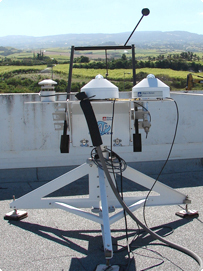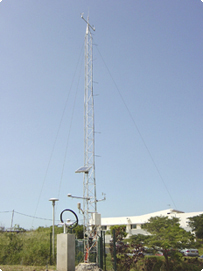PV performance
Published: Monday, July 28, 2008
On the French island of La Réunion, in the Indian Ocean, we find an interesting application within the project ‘Performance PV France’. Kipp & Zonen pyranometers measure the solar radiation received by photo-voltaic cells on fifteen different planes, which represent a semi-hemisphere.
As part of a national program, Performance PV France have set up an experiment to evaluate which meteorological parameters influence the output and efficiency of solar cells under different climates. There are three experimental stations, each in a different climatic region of France:
-
Mediterranean climate in Cadarache
-
Alpine climate in Chambery
-
Insular tropical climate on La Réunion Island
Platform at Saint-Pierre, La Reunion
The site in La Réunion is monitored by the Laboratory of Building and System Physics, University of La Réunion. The instrumentation used at this station is divided into two parts:
-
A complete weather station that gives the same data as the national French weather forecast network, with the addition of a Kipp & Zonen
2AP sun tracker providing the direct, diffuse, global and long wave components of the solar irradiance.
-
A semi-hemispheric structure composed of fifteen different planes. Each plane holds two PV polycrystalline silicon cells, one from each of two French manufacturers and a
CMP 11 secondary standard pyranometer.
The data are collected on a data logger and transferred into a web database for remote access.


Pyranometers and PV reference cells
The comparison between solar radiation measurements with pyranometers and with calibrated PV cells improves the quality of the solar energy data resource and the environmental conditions assessment for grid-connected PV systems. The spectral response of the pyranometers is constant while the spectral response of PV cells depends on the technology, the cover materials and the environmental parameters such as air temperature.
It is hoped that the results of this comparison will lead to new methods to accurately evaluate the solar resource and the energy production of PV fields.